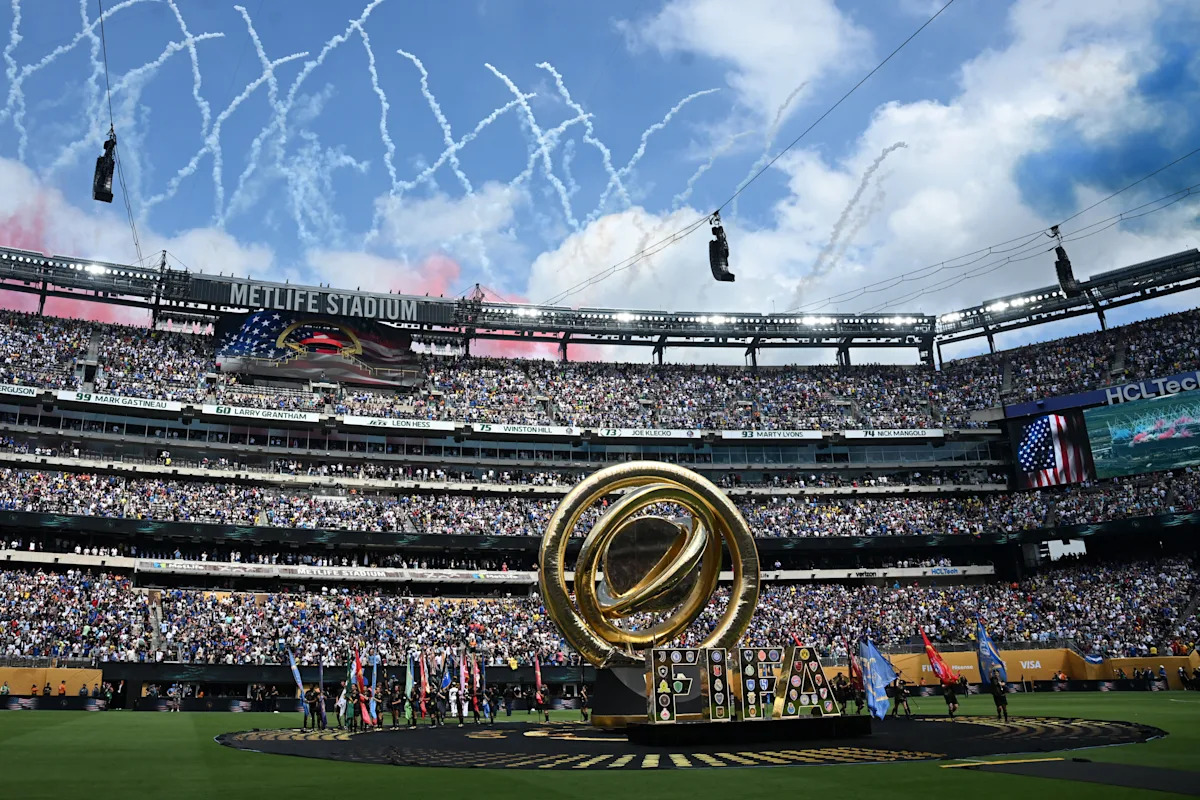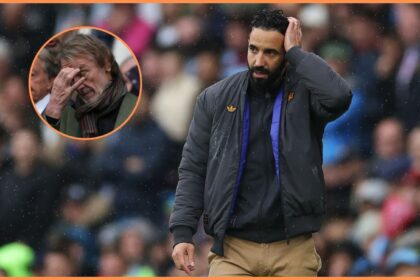EAST RUTHERFORD, N.J. – At MetLife Stadium, uniformed soldiers filed onto the field at 2:51 PM, just nine minutes before the Club World Cup final kicked off on Sunday. The public address system urged fans worldwide to remove their hats as they prepared for the national anthem.
The crowd fell silent, honoring their hosts as the classic American imagery of stars and stripes lit up the video screens, accompanied by fireworks in red, white, and blue. They endured the sweltering sun for another 12 minutes, waiting for a military jet to fly overhead and for 22 players to be introduced individually, NBA style. Renowned boxing announcer Michael Buffer introduced one squad, referring to them as "Blue Corner" and detailing their accolades, while a similar introduction followed for PSG. Finally, at 3:08 PM, the much-anticipated football match commenced.
Chelsea emerged victorious, clinching their first Club World Cup title, but the tournament’s significance extended beyond the match result. It served as a "dress rehearsal" for the United States, which will host 78 of the 104 matches of the 2026 World Cup. This event was not merely a test run; it heralded the Americanized World Cup experience.
The World Cup is Americanized
FIFA leaned heavily into American traditions for the Club World Cup, incorporating dynamic ticket pricing, in-game DJs, military presentations, and flyovers during the opening and closing ceremonies. Typically, national anthems do not precede club matches, yet the "Star-Spangled Banner" was played an hour before kickoff. Unlike in Europe, where games start precisely as scheduled, these matches often began about an hour late, reminiscent of Major League Baseball and MLS timings.
Traditionally, teams walk onto the pitch together, but here, the players lined up and were introduced individually. A FIFA spokesperson noted that these introductions were part of the "innovative" nature of the tournament, though this approach faced criticism internationally. Some players, like Joan Cancero from Al Giral, expressed a preference for the traditional group entrance.
International fans typically enjoy the a cappella traditions before matches, but the Club World Cup opted for pop music instead. Pre-match musical acts and halftime performances extended the breaks to 24 minutes—significantly longer than the typical 15 minutes. While some innovations, like "Ref Cam," align with evolving fan experiences, this event’s overt patriotism contrasted sharply with the previous FIFA tournaments, hinting at what we might expect next summer.
Heat and "Unacceptable Conditions"
A significant issue in this tournament was the heat, mentioned frequently by players and coaches. Some described the conditions as “impossible,” with temperatures reaching the mid-90s. Chelsea’s Enzo Fernandez noted feeling dizzy and having to take a break during play, while others echoed similar sentiments about the struggles posed by the heat.
Kickoff times added to the difficulty, with FIFA scheduling many games before 4 PM. PSG’s manager, Luis Enrique, observed that while the timing favors European fans, it adversely affects player performance. Ferguson urged for changes in scheduling for future tournaments, emphasizing that player safety should come before commercial interests.
The organization FIFPRO has called on FIFA to prioritize health over profit but it remains to be seen if FIFA will heed this advice. With the 2026 World Cup planned to have an extensive schedule across more venues than the Club World Cup, the heat will need to be managed more effectively. FIFA’s Gianni Infantino acknowledged the heat issue but stated the need for cooling solutions.
Weather and Delays
Thunderstorms also posed a risk, with several matches faced with delays. Despite fewer games expected in Host City for the World Cup, previous tournaments have shown weather-related interruptions are likely, raising questions about the U.S. as a host.
Quality of the Pitches
Poor pitch conditions were another common complaint. Temporary grass installations over artificial turf led to dissatisfaction among players, like Chelsea’s Reece James, who expressed hope for improvements ahead of the World Cup.
Travel and Transportation Challenges
Travel logistics differ greatly between continents; players in Europe are accustomed to manageable bus rides, while U.S. teams frequently fly and experience inconsistent public transport. This will be even more pronounced during the 2026 tournament.
US Stadiums and Fan Management
Local authorities managed crowd control effectively, ensuring the safety of fans, largely passing their tests despite some friction. While most instances of crowd management were simple, there were occasional issues, such as Flamengo fans becoming unruly at Hard Rock Stadium.
Atmosphere and Attendance
Fans from South America brought vibrant enthusiasm to the tournament. However, many in attendance at the finals were there merely as tourists, with unprecedented jersey representations from teams worldwide. This indicates that while many will travel for 2026, the unique challenge of visa restrictions and travel costs could affect attendance.
Ticket Sales and Attendance Concerns
There’s a prevailing assumption that World Cup tickets will sell out, but the Club World Cup highlighted that full stadiums are not guaranteed. While it attracted over 2 million fans, many seats remained empty, raising concerns about whether the same patterns will repeat in 2026.
Politics of the Event
Notably, U.S. President Donald Trump was a significant presence at the final, further emphasizing the intertwining of politics and the tournament, leading to potential mixed reactions from fans.
Overall, the developments from the Club World Cup matter to soccer fans as they hint at a changing landscape for the sport in America. The shift toward a more Americanized experience could redefine how soccer is enjoyed, both domestically and internationally, and set the stage for the larger spectacle of the 2026 World Cup.



